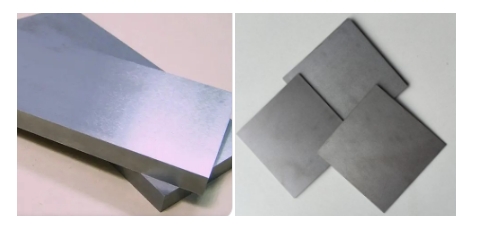- 18
- Dec
Proprietățile aliajului de molibden lantan: Care este diferența dintre aliajul de molibden lantan (Mo-La) și aliajul de molibden TZM?
Proprietățile aliajului de molibden lantan: Care este diferența dintre aliajul de molibden lantan (Mo-La) și aliajul de molibden TZM?

What is the difference between molybdenum lanthanum (Mo-La) alloy and TZM molybdenum alloy?
Ce este un aliaj de molibden-lantan? Aliajul de molibden-lantan este un aliaj compus din molibden de metal de bază și trioxid de lantan prezent ca particule dispersate în matrice. Conținutul de La2O3 din aliaj este în general de 0.5% ~ 5.0% (fracție de masă). La
Through the research on the high temperature performance and the corresponding structure of molybdenum-lanthanum alloy and TZM alloy at 1000~1800℃. The results show that when the temperature is lower than 1400℃, the molybdenum-lanthanum alloy has a higher comprehensive performance of strength and plasticity. When the temperature is greater than or equal to 1400℃, the tensile strength of the molybdenum-lanthanum alloy decreases, and the plasticity of the molybdenum-lanthanum alloy also decreases. With the increase of the test temperature, the tensile strength of the TZM alloy decreases, but the plasticity of the TZM molybdenum alloy increases, which is exactly the opposite of the molybdenum-lanthanum alloy.
În același timp, indiferent dacă este vorba de rezistență sau plasticitate, aliajul TZM este comparat cu aliajul de molibden-lantan la aceeași temperatură. Observațiile microstructurii arată că aceste două aliaje de molibden încep să se recristalizeze la 1100 ℃ și continuă până la 1550 ℃, iar boabele lor recristalizate prezintă o structură alungită, care este diferită de boabele echiaxiale în starea recristalizată a molibdenului pur.
1. Introduction to molybdenum lanthanum alloy
Molybdenum lanthanum alloy, also known as high temperature molybdenum, brand MoLa, is made of molybdenum doped with a small amount of lanthanum trioxide (La2O3) particles to form a so-called laminated fiber structure. This special microstructure can remain stable even at temperatures as high as 2000°C. Therefore, molybdenum-lanthanum oxide has creep resistance even under extreme conditions of use. We mainly process such molybdenum alloys into high-temperature furnace parts, such as vacuum furnace heat shields, sintering and annealing boats, stranded wires or evaporator coils.
2. Advantages of molybdenum lanthanum alloy:
Higher recrystallization temperature;
Structura de particule alungită poate îmbunătăți ductilitatea;
Stronger oxidation resistance;
Higher creep resistance.
3. Recrystallization temperature: 1400℃~1500℃.
4. Resistivity of molybdenum-lanthanum alloy (unit: Ω*mm2/m)
| temperatura℃ | 20 | 600 | 1000 | 1200 | 1400 | 1700 | 1800 | 1900 | 2000 |
| rezistivitatea | 0.054 | 0.205 | 0.314 | 0.374 | 0.435 | 0.506 | 0.525 | 0.558 | 0.571 |
5、Molybdenum lanthanum alloy composition
| Calitate | main ingredient% | (nu mai mult de%) | |||||||||
| Mo | Ti | Zr | C | La2O3 | C | 0 | N | Fe | Ni | Si | |
| Mo1 | margine | – | – | – | – | 0.01 | 0.007 | 0.002 | 0.01 | 0.002 | 0.01 |
| TZM | margine | 0.40 ~ 0.55 | 0.06 ~ 0.12 | 0.01 ~ 0.04 | – | – | 0.03 | 0.002 | 0.01 | 0.005 | 0.005 |
| MoLa | margine | – | – | – | 0.4 ~ 1.2 | 0.01 | – | 0.002 | 0.01 | 0.002 | 0.01 |
6、Recommended surface load of molybdenum-lanthanum alloy:4~9W/cm2
